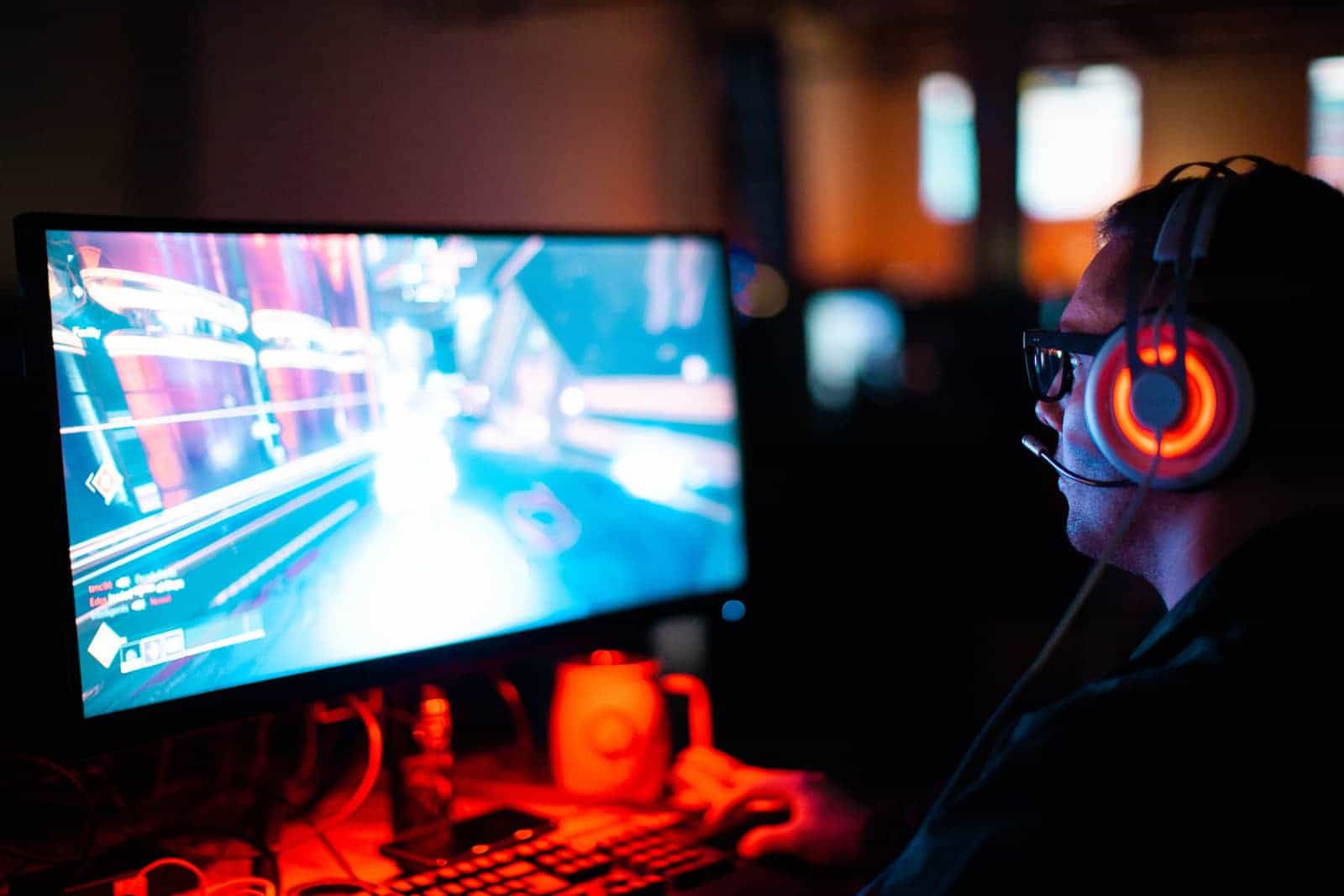
As someone who's spent countless hours researching and comparing laptops, I understand that finding the best laptop for light gaming and school can be a challenging task. With the diverse range of laptops available today, it's crucial to balance the specific requirements of both casual gaming and academic productivity. In this guide, I'll help you navigate through the sea of options, focusing on the unique preferences and needs of users who want a reliable machine for light gaming sessions and effective school performance.
When it comes to light gaming, a laptop with a decent GPU and CPU is essential to run popular titles like Fortnite, Apex Legends, and Minecraft smoothly. On the other hand, school tasks usually involve multitasking, document editing, and video conferencing, which demand a snappy processor, ample RAM, and a comfortable keyboard. The best laptop for light gaming and school should offer a harmonious blend of these features, ensuring an enjoyable gaming experience without compromising on academic productivity.
To help you find the perfect laptop, I've reviewed an extensive spreadsheet of recent releases, comparing specs and reviews from both professional sources and user-generated feedback. I've narrowed down the top laptops based on topic-specific requirements, considering factors like battery life, portability, and price ranges. Throughout this guide, you'll discover valuable insights and recommendations tailored for students who want to strike the perfect balance between leisure and study, ultimately finding the ideal laptop to conquer both the gaming world and the classroom.
Power Up Your Performance: Choosing the Right Processor for Your Needs
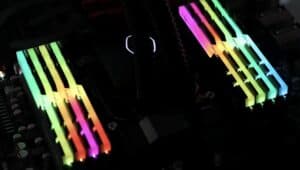
When it comes to selecting the right processor for your laptop, there are a few key factors to consider. With so many options on the market, it can be overwhelming to determine what's best for your needs.
Firstly, it's important to note that Apple has released MacBooks with their ARM-based M1, M2, M2 Pro, and M2 Max system-on-chip modules. These offer exceptional single-core performance and battery life. Meanwhile, AMD has captured 20% of the laptop CPU market, with plenty of notebooks equipped with 6th-generation Ryzen CPUs, and recently began shipping the first batches of laptops equipped with its latest 7th-generation Ryzen processors. Intel's 13th-generation Core processors have already been released, but 12th-generation Core CPUs can still provide a lot of value, especially if you don't need cutting-edge performance.
If you're looking for a laptop for light gaming, a high-end CPU with good single-core performance is necessary. For school or general use, an H-series processor will be more than enough. The latest generation of CPUs from Intel (i7/i9) and AMD (Ryzen 7/Ryzen 9) are great options for gaming laptops, but keep in mind they are power-hungry and will result in shorter battery runtime.
When comparing processors, I use benchmarks such as Cinebench R23, PassMark, and PCMark to get a better idea of overall performance. However, it's important to remember that benchmarks don't always reflect real-world performance.
Here are my recommendations based on budget:
| Budget | Processor |
|---|---|
| Minimum | i3-1115G4 |
| Recommended | i5-1135G7 |
| High-end | i7-11370H |
In summary, selecting the right processor for your laptop ultimately comes down to your needs and budget. Take into account factors such as single-core performance, battery life, and overall performance when making your decision.
Level up your laptop's graphics for gaming and schoolwork
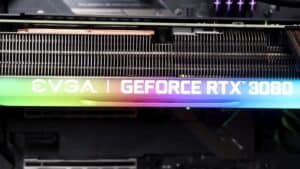
When it comes to choosing a laptop for school work and light gaming, the graphics card is not necessarily the most critical component. Integrated graphics are perfectly adequate for most students, and they come as the default option in most laptops. However, a dedicated GPU is necessary if you're a gamer or need to run demanding applications such as AutoCAD or SolidWorks.
The graphics card market has changed significantly in recent years. Nvidia dominates the laptop GPU market, with their latest generation of GPUs bearing the RTX branding. This is a nod to ray-tracing technology that is used in some games but not many. The RTX 40 series cards are already hitting the shelves, but the RTX 30 series cards still comprise the lion's share of the current notebook GPU market.
When it comes to choosing the right graphics card for light gaming, I recommend looking at benchmarks such as 3DMark, Unigine Heaven/Valley, and 3DMark Fire Strike and Time Spy. These tests are sensitive to clock speed differences, and they can help you determine which GPU is best for your needs.
At the minimum, I recommend a GeForce GTX 1650 for light gaming. For better performance, the recommended GPU is a GeForce RTX 3050. For those who want high-end gaming performance, a GeForce RTX 2060 is an excellent choice.
It's important to note that if you're looking for a laptop with a long battery life, you'll have to make some sacrifices in terms of graphics power. Gaming laptops tend to have shorter battery life due to their powerful components being underpowered by design. Therefore, it's essential to strike a balance between performance and battery life when choosing a laptop graphics card.
RAM up your gaming and productivity
When it comes to choosing the right laptop RAM for light gaming and school work, there are a few factors to consider. Let's take a look at the current state of the memory market and what you should expect depending on your budget.
What's new in the memory market?
The latest-gen Intel and AMD CPUs support both DDR4 and DDR5 RAM. However, DDR5 is still quite expensive and needs time to mature as a technology. As a result, most mid-range laptops come with 16 GB of DDR4 RAM, while high-end laptops offer 32 GB or more.
How much memory is needed for light gaming and school work?
RAM is one of the easiest components to upgrade, so it's not worth stressing about. If you're looking for a laptop for school, you can get away with 8 GB or even 16 GB if you're into video editing or 3D modeling. However, if you're into gaming – 32 GB is the sweet spot for most titles, though some games will require more (especially if you're using a high refresh rate panel).
DDR5 – what to expect and when to wait?
While DDR5 offers marginally better performance, it's not enough to justify the cost. That's especially true since most laptops have limited upgradability options and limited RAM slots (2-4). If you're in the market for a laptop with DDR5, you'll need to wait for newer models to come out.
Other specs that do not affect performance
When it comes to RAM, other specs like latency, ECC, and frequency do not have a significant impact on performance, so you don't need to worry about them too much.
What to expect depending on your budget
If you're looking for a budget gaming laptop under $1,000, then you'll need to make sure it has enough memory to handle your favorite titles. Aim for at least 16 GB of RAM, and you should be good to go. For mid-range laptops in the $1,000 to $2,000 range, you can expect to find laptops with 16 GB to 32 GB of RAM. And if you're looking for a high-end gaming laptop over $2,000, then you can expect to find laptops with 32 GB or more of RAM.
To summarize, if you're looking for a laptop for light gaming and school work, then you should aim for at least 8 GB of RAM, with 16 GB being the recommended amount. DDR5 is not yet worth the extra cost, so stick with DDR4 for now. And depending on your budget, you can expect to find laptops with 16 GB to 32 GB of RAM.
Answering Your Burning Laptop Questions
Q: What is the best laptop for light gaming and school?
The Lenovo Legion 5 Pro and ASUS ROG Strix Scar are both great options for light gaming and school use. They offer a balanced mix of performance and affordability, making them ideal choices for students who want to have some fun after class.
What laptops are good for school and gaming?
The HP Victus 15t, GIGABYTE AORUS 15 XE4, Lenovo Legion 5 Pro, ASUS ROG Strix Scar, and ASUS ROG Zephyrus Duo are all excellent choices for students who want to game on their laptops without sacrificing performance or battery life.
How much RAM do I need for light gaming and school work?
For light gaming and school work, we recommend at least 8 GB of RAM. However, if you want to future-proof your laptop, we recommend going for 16 GB or even 32 GB of RAM.
What graphics card is suitable for light gaming on a laptop?
For light gaming on a laptop, a GeForce GTX 1650 or a GeForce RTX 3050 graphics card is more than enough. However, if you want to play more demanding games, we recommend going for a GeForce RTX 2060 or higher.
What is the best processor for light gaming and school work on a laptop?
For light gaming and school work, we recommend at least an i5-1135G7 processor. However, if you want more performance, we recommend going for an i7-11370H processor.
Can you play games like Minecraft or Roblox on a regular school laptop?
Yes, you can play games like Minecraft or Roblox on a regular school laptop. However, you may experience some lag or lower frame rates, especially if your laptop doesn't have a dedicated graphics card.
What is a good budget laptop for light gaming and school?
The HP Victus 15t is an excellent budget laptop for light gaming and school. It offers a good balance of performance and affordability, making it a great choice for students who don't want to break the bank.
Is SSD necessary for a laptop for light gaming and school?
While an SSD is not necessary for light gaming and school work, it does make a significant difference in performance. We recommend going for a laptop with an SSD if you can afford it.
What is a good battery life for a laptop for light gaming and school?
A good battery life for a laptop for light gaming and school is around 8 hours. However, if you want more battery life, we recommend going for a laptop with a larger battery or one that uses energy-efficient components.
What are the recommended laptop brands for light gaming and school?
The recommended laptop brands for light gaming and school include HP, Lenovo, GIGABYTE, and ASUS. These brands offer a good mix of performance, affordability, and reliability, making them ideal choices for students.
5 Best Laptops for light gaming and school
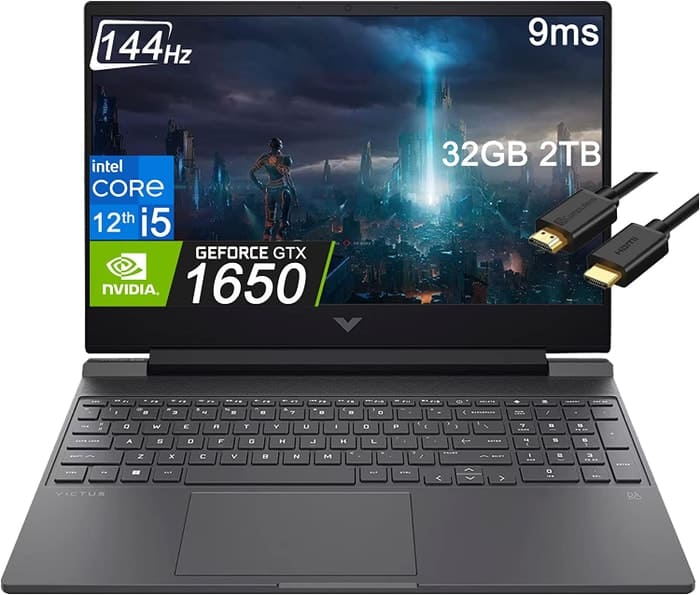
1.HP Victus 15
The HP Victus 15 is a budget-friendly laptop that offers decent gaming performance and doubles as a work laptop, but its battery life and plain design leave something to be desired.- Excellent price
- Good gaming performance
- Can double as a work laptop
- Solid array of ports
- Bad battery life
- Rather plain design
- Weak GPU yields unsatisfactory frame rates
- Screen only so-so despite 144Hz refresh rate
Summary
The HP Victus 15 strikes a balance between affordability and performance, making it a solid option for light gaming and school work. It features a sturdy build and a sharp display with a high refresh rate, but its lackluster battery life and plain design are drawbacks to consider.
Alternatives
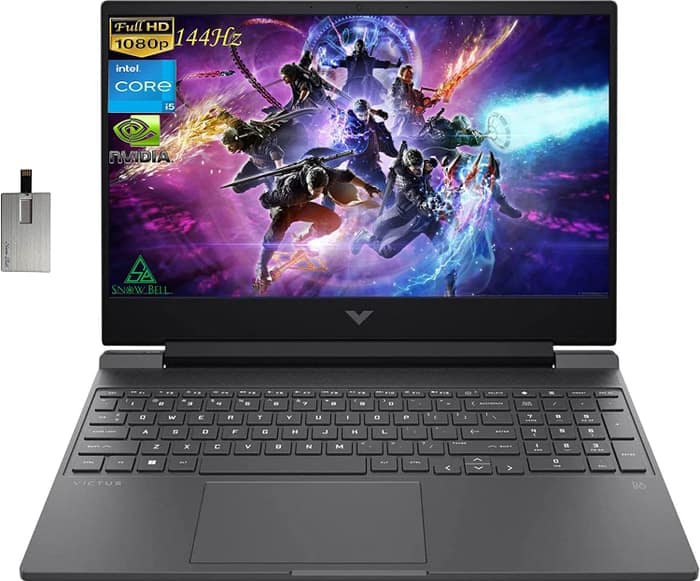
HP Victus
- Delivers smooth gameplay at 1080p.
- Fast SSD.
- No VRR to reduce screen tearing.
- Some performance loss on CPU under load.

2.ASUS TUF Dash F15
The ASUS TUF Dash F15 is a competitively priced laptop that offers good performance and a lightweight design, making it a solid option for light gaming and school work.- Lightweight and well-built design
- Good input options and IO
- Choice between FHD 300Hz and QHD screens
- Significantly more powerful than the previous generation
- Quirks affecting everyday ergonomics
- Most ports squeezed together on the left
Summary
The ASUS TUF Dash F15 is a more affordable alternative to the full-size TUF Gaming models, but still offers a powerful performance and a well-built design. It has good input options, a choice between FHD 300Hz and QHD screens, and a decent battery life. However, there are some quirks affecting everyday ergonomics, and it's advised to avoid the FHD 144Hz panel option.
Reviews
Alternatives
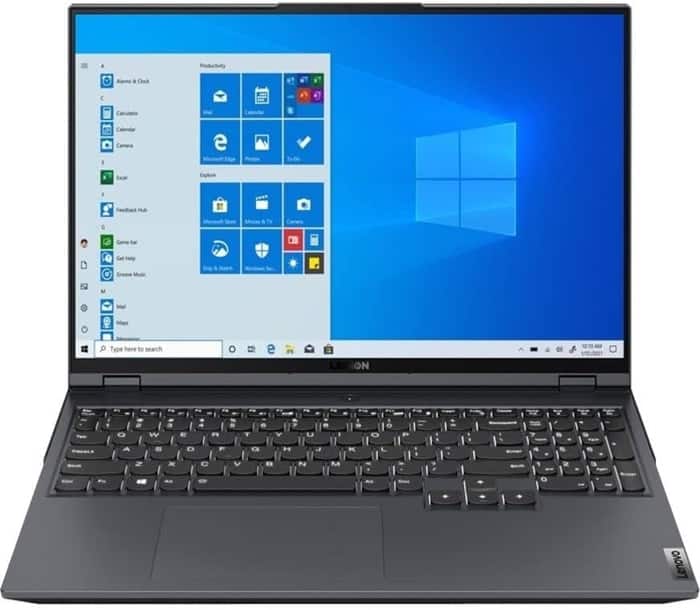
Lenovo Legion 5i Pro 16
- Stylish, sleek form factor
- Gorgeous display
- Webcam quality is disappointing
- No biometrics
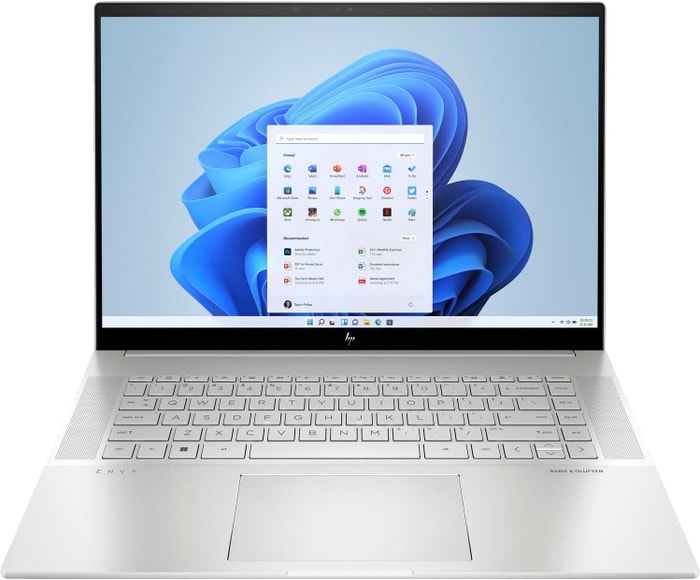 $1,800
$1,8003.HP Envy 16
HP Envy 16: A Tempting Choice for Creative Apps and Light Gaming- Plenty of CPU and GPU power
- New 120Hz screen refresh rate
- High-res webcam
- Sleek design
- Merely adequate base screen
- Optional OLED has fewer pixels than before
- Bulky and heavy
Summary
The HP Envy 16 offers high-end features such as a 120Hz refresh display and a world-class webcam, making it a great option for creative applications and light gaming. However, it is a bit bulky and heavy, and the base screen is only adequate.
Reviews
Alternatives
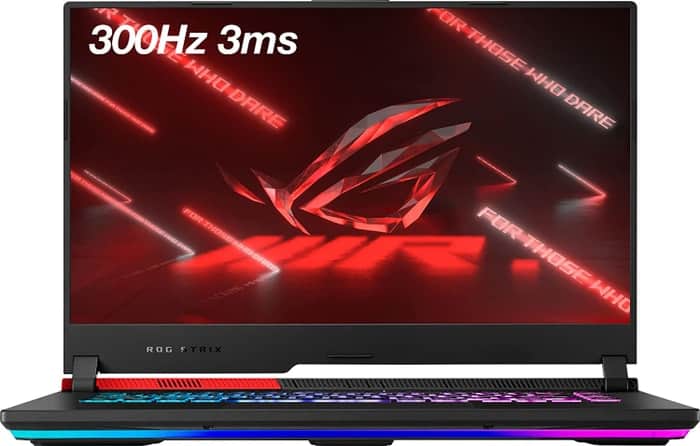
ASUS ROG Strix G15
- Powerful CPU and GPU performance
- High-quality display
- Skimpy connectivity options
- Potential for coil whine in certain situations
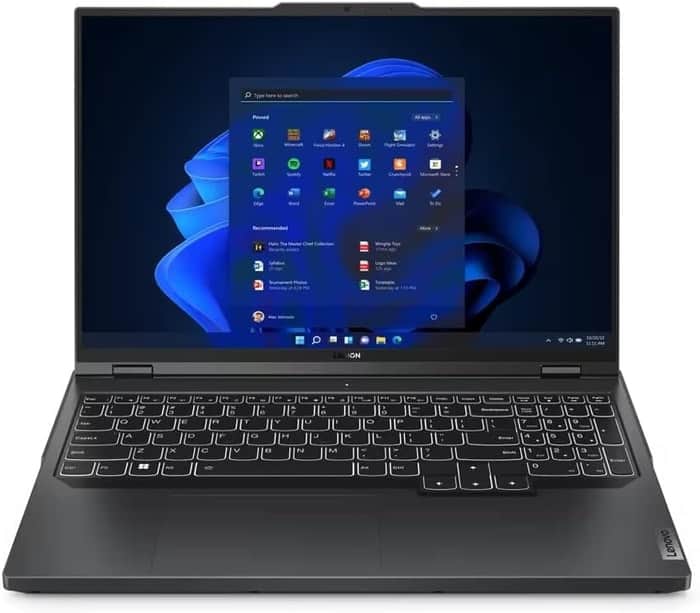
4.Lenovo Legion Pro 5
Lenovo Legion Pro 5 offers good value for light gaming and school use, but has some performance and audio limitations.- Good build quality and design
- Good screen and IO
- Competent CPU with GPU options
- Competitively priced
- No Thunderbolt or biometrics
- Hotspots during gaming
- Poor speakers
Summary
The Lenovo Legion Pro 5 is a competitively priced mid-tier laptop that offers good performance and a solid build quality. It has a good screen and a decent keyboard and trackpad, but it lacks Thunderbolt support, has hotspots during gaming, and poor speakers.
Reviews
Alternatives
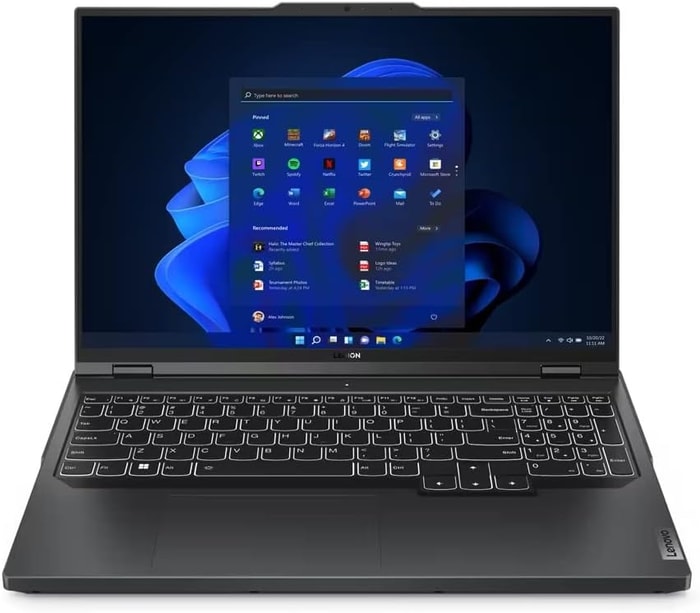 $2,840
$2,840Lenovo Legion Pro 5
- Strong performance for the price
- Quality build and port selection
- Display quality and battery life are just decent
- Bulky and heavy

5.Lenovo Legion Pro 7i 16
Lenovo Legion Pro 7i 16: An Impressive Performer with Sleek Design at a Justifiable Price.- Strong overall performance
- Big, bright, and fast display
- Per-key RGB lighting
- Some flex to keyboard deck
- Poor battery life
Alternatives
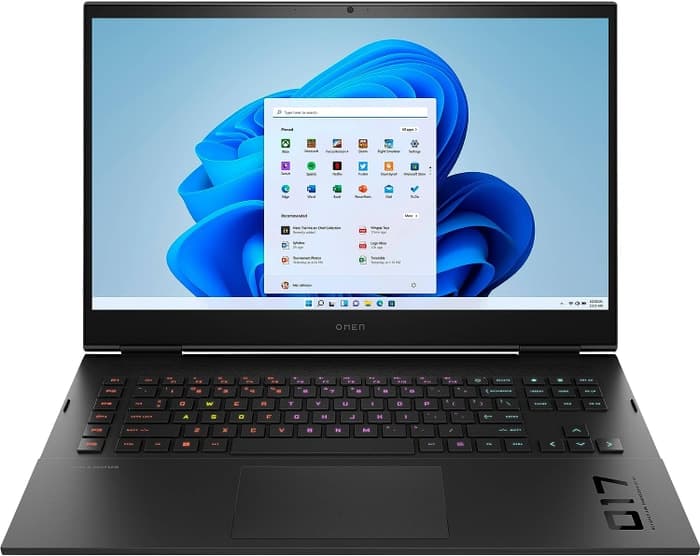
HP Omen
- Slim and portable design for a 16-inch laptop
- Decent gaming performance at a reasonable price
- All-AMD configuration lags behind Intel- and Nvidia-based competitors
- Unimpressive 144Hz refresh rate and full HD resolution
Table of the Best Laptops for light gaming and school
| Laptop | Price (approx) |
| HP Victus 15 | $880 |
| ASUS TUF Dash F15 | $1,160 |
| HP Envy 16 | $1,800 |
| Lenovo Legion Pro 5 | $2,630 |
| Lenovo Legion Pro 7i 16 | $3,390 |

